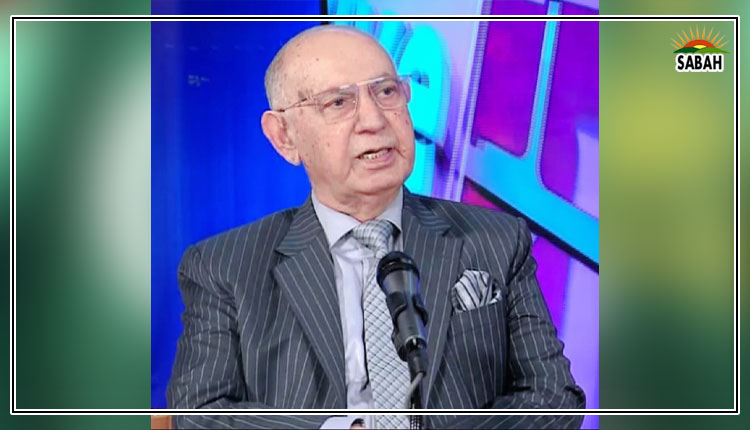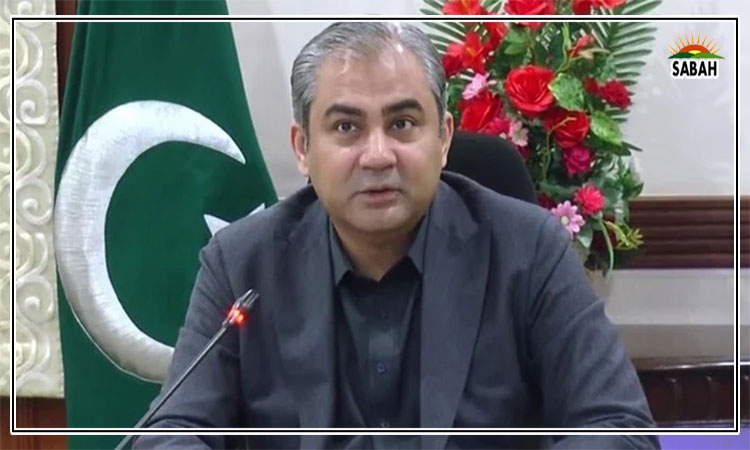Funny how that works … Khurram Husain
IF you have ever had the pleasure to speak at length with members of Pakistan’s top elites, or one of those who volunteer to be mouthpieces for the interests of the elites, you will notice how they are always able to offer good reasons for why bad policies need to continue.
There are good reasons for why exchange rate interventions need to take place to prevent a devaluation. There are also good reasons for why the state should use public resources to shower subsidies on the business interests of billionaires. There are good reasons for why import controls are a good idea. There are also good reasons for why the country’s central bank should print money to give to these businesses as subsidised credit, or to finance the fiscal dysfunctions of the state.
Likewise, there are very good reasons for why every ruler who comes to power in Pakistan must go begging for handouts from rich countries around the world. You will hear very good reasons for why agricultural incomes cannot be taxed, or wealth or property for that matter.
All these are elements of the policy package the country has been using for decades now to either rig a short-lived growth spurt, or to manage the aftermath when that growth spurt inevitably creates a crash.
Import controls began being introduced in 2016, for example. Since then, their incidence and coverage has expanded or contracted, depending on the need of the hour, but they have not gone away. Exchange rate interventions have been used continuously throughout these times, varying only in their intensity.
The printing of money to spur growth, or to compensate for sharp declines in the foreign exchange reserves, is an old practice, but since 2017 it has been occurring in bursts that are far larger than anything we’ve seen in preceding decades. Every government since 2000 has launched some sort of effort to broaden the tax base, some rash and coercive, others using a carrot and stick. All have failed.
Low interest rates and fixed exchange rates are the most favoured tools in our policy mix to spur growth. This was the recipe used to engineer the Musharraf-era growth spurt, and it was used once again at the time of the last PML-N government. In both instances, it created the conditions for a crash. And in both instances, the government hailed its growth as an avatar of its success and blamed the crash on its successor.
The PTI government took it to another level. They used an amnesty scheme (and yes, you will hear good reasons for why that amnesty scheme for property market speculators was such a great thing), coupled with low interest rates, a fixed exchange rate and a raft of subsidised credit schemes coupled with large-scale foreign borrowing, to give us the shortest growth spurt of all time and the largest crash we have ever experienced. Once again, they hailed their growth and blamed the crash on their successor.
All these good reasons put together give us the lousiest package of economic policies.
Along the way, as this sordid tale was being written and waged on the rest of us, there were lots of good reasons for why these things need to happen. There were good reasons behind the amnesty scheme and the prolonged bout of low interest rates and the money printing either via refinance facilities or open market operations. During the months when the inevitable crash gripped the country, there were good reasons why import controls were needed and crackdowns had to be undertaken to stabilise the exchange rate.
But there is one thing that is hard to miss through all the babbling ‘debate’ that plays itself out each time this cycle repeats itself. All these good reasons put together give us the lousiest package of economic policies with which to deal with an economic crash. Funny how that works.
Each item in the package has good reasons for why it should exist, why it must exist, why there will be ruin for us if it did not exist. But put them together, and you get a package of policies that ensures the country goes deeper into the hole rather than climbing out of it.
How does that happen? I’m sure somewhere they have a name for this sort of thing, when a lot of things that sound good add up to something bad when put together. I don’t know what the name is. But I think I know why it works like this. And at the risk of spoiling the joke by explaining it, let me put it in plain English here.
The fact is that none of those reasons are good. They only sound good in the moment. And the problem with things that sound good only in the moment is that one never really knows when the moment has ended. With varying levels of intensity and coverage, we have had import controls for seven years now and money printing for six years. In each year, you will find good reasons why these things are necessary. But run with them for years on end, and you get a moribund economy burning in the fires of inflation.
Today, we have reached a point where things that sound good cannot be relied upon any longer. The pain is here, and more is coming if we don’t get the fundamentals right. And pulling through that will take more than a crackdown and certainly more than a bailout or even two.
Today, we have a country that is struggling to compete in a 21st-century global marketplace on fiscal and productive bases that were forged in the 1980s. It will take a hard dose of old-fashioned economic common sense and a mammoth effort to tax the rich.
Time to grow the pie and distribute the burden based on the ability to bear. How about that then? We have to build our future with some of the oldest ideas around. Funny how that works.
The writer is a business and economy journalist.
khurram.husain@gmail.com
X (formerly Twitter): @khurramhusain
Courtesy Dawn, October 5th, 2023












